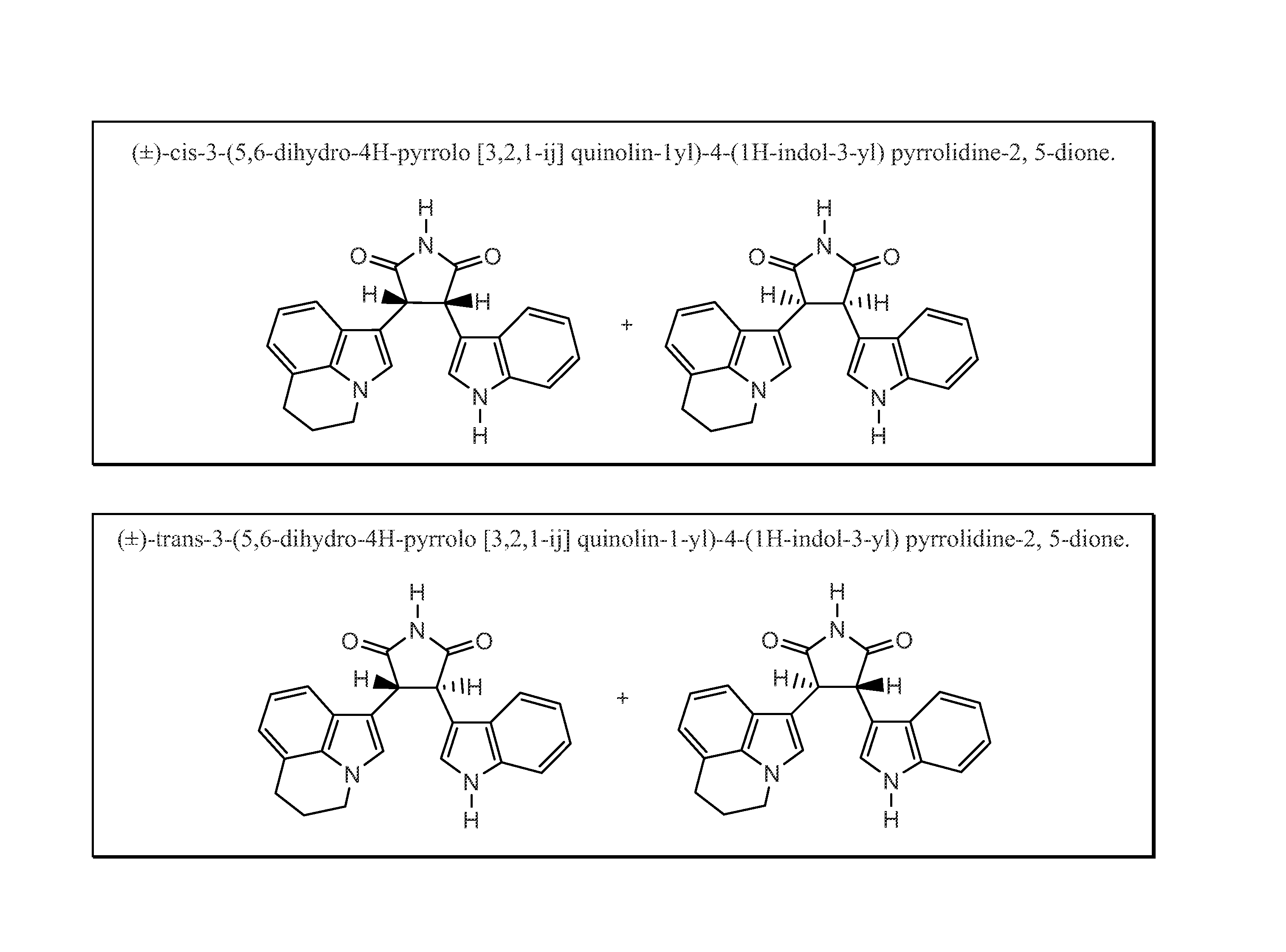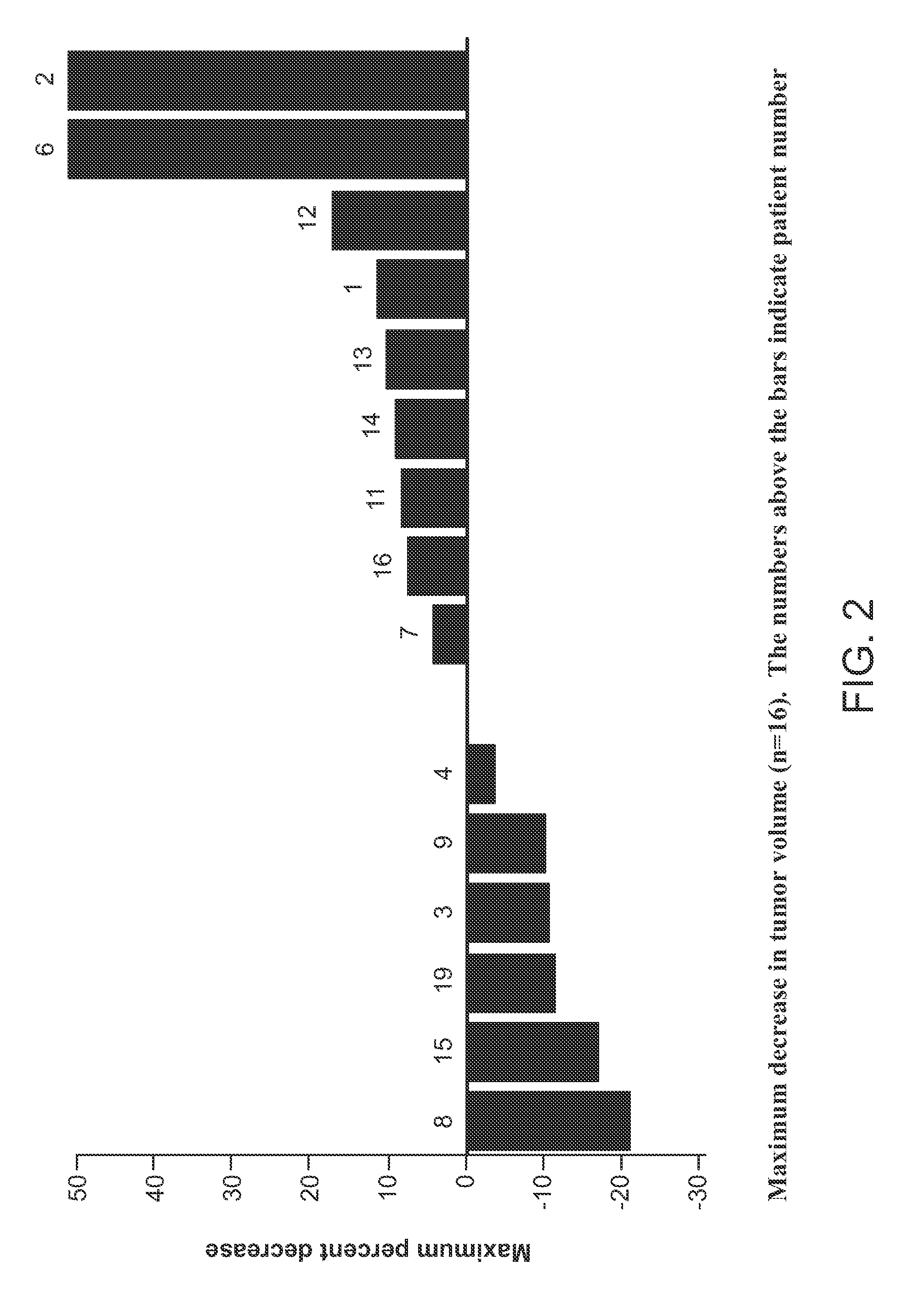Method for Determining Treatment Efficacy
a treatment efficacy and method technology, applied in the field of determining treatment efficacy, can solve the problems of uncontrolled cellular growth, uncontrolled cell attachment properties, and difficult to predict whether a particular cancer will respond to a particular chemotherapeutic agent, and achieve the effect of defining the efficacy of a c-met inhibitor and being effective in treating
- Summary
- Abstract
- Description
- Claims
- Application Information
AI Technical Summary
Problems solved by technology
Method used
Image
Examples
example 1
[0193]Patients with hepatocellular carcinoma (Table 1) were administered with (−)-trans-3-(5,6-dihydro-4H-pyrrolo[3,2,1-ij]quinolin-1-yl)-4-(1H-indol-3-yl)pyrrolidine-2,5-dione at an oral dose of 360 mg of (−)-trans-3-(5,6-dihydro-4H-pyrrolo[3,2,1-ij]quinolin-1-yl)-4-(1H-indol-3-yl)pyrrolidine-2,5-dione (Agent A) twice daily (BID) for several cycles of 28-day period. Serum HGF from the patients were collected and analysed. HGF serum levels (median 2400 ng / mL) were higher after the administration of Agent A than in previous treated patient populations. HGF levels were correlated to the efficacy of Agent A and neutropenia (FIGS. 3a and 3b). In contrast, VEGF serum levels did not correlate with Agent A activity (FIG. 4).
TABLE 1Baseline patient characteristics (n = 21)Median age, years (range)66.2(47-80)Sex, n (%)Male19(90.5%)Female2(9.5%)ECOG performance status, n (%)08(38.1%)113(61.9%)Child-Pugh cirrhosis severity, n (%)A17(80.9%)B4(19.1%)Median serum alfa-fetoprotein, ng / ML (range)20...
PUM
| Property | Measurement | Unit |
|---|---|---|
| diameter | aaaaa | aaaaa |
| diameter | aaaaa | aaaaa |
| diameter | aaaaa | aaaaa |
Abstract
Description
Claims
Application Information
 Login to View More
Login to View More - R&D
- Intellectual Property
- Life Sciences
- Materials
- Tech Scout
- Unparalleled Data Quality
- Higher Quality Content
- 60% Fewer Hallucinations
Browse by: Latest US Patents, China's latest patents, Technical Efficacy Thesaurus, Application Domain, Technology Topic, Popular Technical Reports.
© 2025 PatSnap. All rights reserved.Legal|Privacy policy|Modern Slavery Act Transparency Statement|Sitemap|About US| Contact US: help@patsnap.com



